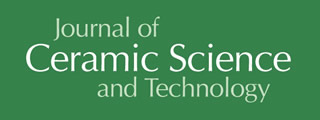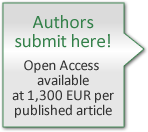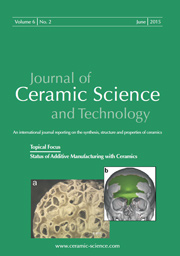Articles
All articles | Recent articles
3D Printing of Zirconia Ceramic Slurry: Effect of Overlapping Rate on Surface Finish and Mechanical Properties
J. Zhang1, J. Zhou2, J. Cai1, G. Duan1
1 School of Mechanical Engineering, Hebei University of Technology, Tianjin 300401, China
2 School of Mechanical Engineering, Tianjin University of Science and Technology, Tianjin 300222, China
received August 9, 2020, received in revised form November 14, 2020, accepted May 24, 2021
Vol. 12, No. 2, Pages 71-80 DOI: 10.4416/JCST2020-00020
Abstract
This paper reports on how water-based zirconia ceramic for dentures has been successfully prepared for 3D printing based on a material extrusion process. The rheological properties of the ceramic slurry determine the process parameters, that is the buildability and formed quality of the printed samples. The rheological properties of the zirconia ceramic slurry have been explored to identify suitable process parameters. "Collapse" and "overlapping" models for the ceramic slurry filament have been developed to underpin the theoretical groundwork for selection of suitable printing parameters. Nozzles with inner diameters measuring 0.4 mm, 0.5 mm, 0.6 mm and 0.7 mm were selected for extrusion tests. The test results showed that, in spite of different nozzle diameters, all the height errors are below 5 %, indicating the rationality for the currently proposed "collapse" model. The surface finish and porosity of the printed samples before and after sintering were observed with a digital microscope. Surface roughness, density and mechanical properties of the printing samples were tested and measured. The experimental results show that for the nozzle inner diameter of 0.5 mm, when the overlapping rate of the filaments is set to 6.4 %, in accordance with the currently proposed "overlapping" model, the relative density of the printing sample is 0.99; while after sintering, a very desirable roughness of 1.4 μm and bending strength of 611.64 MPa are achieved. The rationality of the currently proposed "collapse" and "overlapping" models is comprehensively verified by the superior surface quality and mechanical properties of the printed samples. Setting of a suitable overlap rate is helpful for improving the printed quality of ceramic parts. The paper sheds light on precision improvement for 3D printing material extrusion technology in general.
![]() Download Full Article (PDF)
Download Full Article (PDF)
Keywords
Zirconia ceramics, 3D printing material extrusion, filament collapse, overlap rate
References
1 State Administration for Market Regulation of the People's Republic of China, Standardization Administration of the People's Republic of China.GB/T 35021 – 2018 Additive manufacturing-Process categories and feedstock[S]. Beijing: Standards Press of China, 2018.
2 Aliheidari, N., Christ, J., Tripuraneni, R., Nadimpalli, S., Ameli, A.: Interlayer adhesion and fracture resistance of polymers printed through melt extrusion additive manufacturing process, Mater. Design., 156, 351 – 361, (2018).
3 Santana, L., Ahrens, C.H., Netto, A.C.S., Bonin, C.: Evaluating the deposition quality of parts produced by an open-source 3D printer, Rapid Prototyping J., 23, 796 – 803, (2017).
4 Eiliat, H., Urbanic, J.: Visualizing, analyzing, and managing voids in the material extrusion process, Int. J. Adv. Manuf. Tech., 96, 4095 – 4109, (2018).
5 Comminal, R., Serdeczny, M.P., Pedersen, D.B., Spangenberg, J.: Motion planning and numerical simulation of material deposition at corners in extrusion additive manufacturing, Addit. Manuf., 29, 100753, (2019).
6 Chacón, J.M., Caminero, M.A., García-Plaza, E., Núñez, P.J.: Additive manufacturing of PLA structures using fused deposition modelling: effect of process parameters on mechanical properties and their optimal selection, Mater. Design., 124, 143 – 157, (2017).
7 Tang, S.Y., Yang, L., Li, G.J., Liu, X.W., Fan, Z.T.: 3D printing of highly-loaded slurries via layered extrusion forming: parameters optimization and control, Addit. Manuf., 28, 546 – 553, (2019).
8 Plessis, A.: Effects of process parameters on porosity in laser powder bed fusion revealed by X-ray tomography, Addit. Manuf., 30, 100871, (2019).
9 Gu, H., Lian, Q., Wang, H.C., Li, D.C., Jin, G.R., Cui, B.: Extrusion 3D printing processes and performance evaluation of GelMA composite hydrogel, Chin. J. Mech. Eng-En., 56, 196 – 204, (2020).
10 Liu, C., Xu, M.E., Wang, L., Song, J.X.: Simulation and construction of vascular channel in 3D printed cell culture scaffold, CHINA Biotechn., 36,67 – 74, (2017).
11 Godoi, F.C., Prakash, S., Bhandari, B.R.: 3d printing technologies applied for food design: status and prospects, J. Food. Process. Eng., 179, 44 – 54, (2016).
12 Smay, J.E., Cesarano, J., Lewis, J.A.: Colloidal inks for directed assembly of 3-D periodic structures, Langmuir, 18, 5429 – 5437, (2002).
13 Perrot, A., Rangeard, D., Pierre, A.: Structural built-up of cement-based materials used for 3D-printing extrusion techniques, Mater. Struct., 49, 1213 – 1220, (2016).
14 Le, T.T., Austin, S.A., Lim, S., Buswell, R.A., Gibb, A.G.F., Thorpe, T.: Mix design and fresh properties for high-performance printing concrete, Mater. Struct., 45, 1221 – 1232, (2012).
15 Zhu, S.C., Stieger, M.A., Goot, A.J., Schutyser, M.A.I.: Extrusion-based 3D printing of food pastes: correlating rheological properties with printing behaviour, Innov. Food Sci. Emerg., 58, 102214, (2019).
16 Costakis, W.J., Rueschhoff, L.M., Diaz-Cano, A.I., Youngblood, J.P., Trice, R.W.: Additive manufacturing of boron carbide via continuous filament direct ink writing of aqueous ceramic suspensions, J. Eur. Ceram. Soc., 14, 3249 – 3256, (2016).
17 Rueschhoff, L., Costakis, W., Michie, M., Youngblood, J., Trice, R.: Additive manufacturing of dense ceramic parts via direct ink writing of aqueous alumina suspensions, Int. J. Appl. Ceram. Tec., 13, 821 – 830, (2016).
18 Shaw, L., Islam, M., Li, J., Li, L., Imran Ayub, S.M.: High-speed additive manufacturing through high-aspect-rate nozzles, JOM-US., 70, 284 – 291, (2018).
19 Turner, B.N., Gold, S.A.: A review of melt extrusion additive manufacturing processes: II. materials, dimensional accuracy, and surface roughness, Rapid Prototyping J., 21, 250 – 261, (2015).
20 Sun, Q., Rizvi, G.M., Bellehumeur, C.T., Gu, P.: Effect of processing conditions on the bonding quality of FDM polymer filaments, Rapid Prototyping J., 14, 72 – 80, (2008).
21 Ji, Z.H., Zhao, D.C., Hao, J.J., Zhang, X.D., Wang, J.Z.: 3D gel-printing of TiC-reinforced 316L stainless Steel: influence of the printing parameters, J. Mater. Eng. Perform., 27, 5500 – 5510, (2018).
22 Comminal, R., Serdeczny, M.P., Pedersen, D.B., Spangenberg, J.: Numerical modeling of the strand deposition flow in extrusion-based additive manufacturing, Addit. Manuf., 20, 68 – 76, (2018).
23 Luo, B., Xia, H.F., Chen, H.L., Zhu, Z.C., He, X.M., Li, D.C.: Three-dimensional printing technology of ionic gel materials, Chin. J. Mech. Eng-en., 54, 157 – 164, (2008).
24 Serdeczny, M.P., Comminal, R., Pedersen, D.B., Spangenberg, J.: Numerical simulations of the mesostructure formation in material extrusion additive manufacturing, Addit. Manuf., 28, 419 – 429, (2019).
25 Eiliat, H., Urbanic, J.: Determining the relationships between the build orientation, process parameters and voids in additive manufacturing material extrusion processes, Int. J. Adv. Manuf. Tech., 100, 683 – 705, (2019).
26 Wang, J., Chen, T.W., Jin, Y.A., He, Y.: Variable bead width of material extrusion-based additive manufacture, J. Zhejiang. Univ-Sc. A., 20, 73 – 82, (2019).
Copyright
Göller Verlag GmbH


